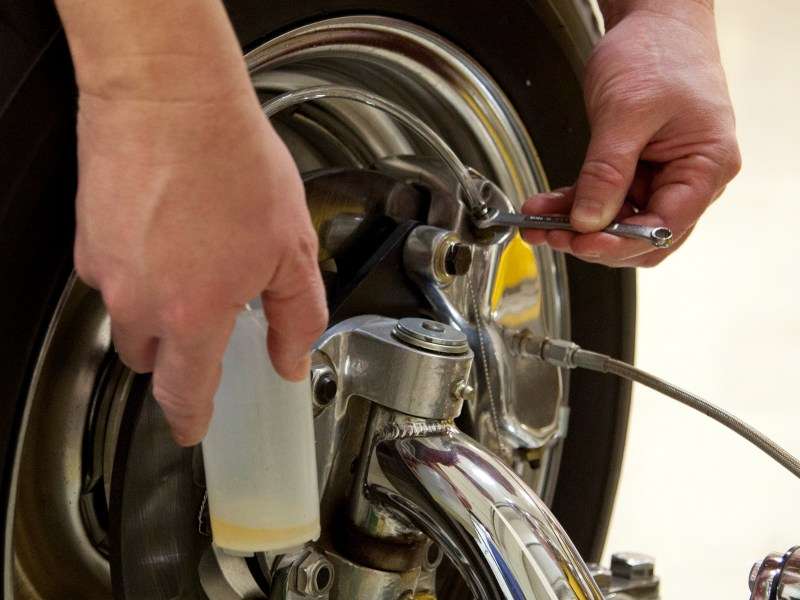Recent Articles
Popular Makes
Body Types
One Man Brake Bleeding Kit

bleed
Bleeding brakes is normally a two-person job; however, sometimes it may be necessary to bleed the brakes when nobody else is around to help you out. If you were to follow the normal one person method, you would probably end up with more air in your lines than when you started.
Normally, when you bleed the brakes you have a helper press the brake pedal, then open the bleeder screw to let some fluid and air out. When the pedal reaches the bottom of its travel you close the bleeder screw, and then your helper releases the pedal. If you are doing the job by yourself and release the brake pedal before closing the breather, air will be sucked into the lines through the bleeder screws.
There are a couple of ways around this, such as purchasing a pressure or vacuum bleeder. If you choose to purchase one of these bleeders they should come with instructions specific to the device. There are also a couple of inexpensive options that work quite well, including gravity bleeding, special one person brake bleeders, or a simple variation on the normal method that can probably be assembled out of materials you already have lying around the house. These methods might not work quite as well as the traditional methods, but should at least get you back on the road.
To bleed the brakes using the gravity method, first, attach a hose to each of the brake bleeders, and run the other end of the hose into a container to catch the fluid as it bleeds out. Next, ensure that the master cylinder is full of fluid, and then open each of the bleeder screws. The brake fluid should slowly start to bleed out of the system. Keep an eye on the fluid level in the master cylinder and ensure that you keep it topped up. As the air works its way through the system, you should be able to see bubbles in the hoses. When each hose is full of fluid and clear of bubbles, close its bleeder.
Another method to use involves using speed bleeders, which are one-way valves that allow the brake fluid and air to escape through the bleeders, but which don’t allow air or old fluid to be sucked back in when the pedal is released. If you don't have speed bleeders, an alternative is to attach a hose to the brake bleeder and then run the other end into a container full of fresh brake fluid. With the hose in the new fluid, when the pedal is released, the fresh fluid will be sucked into the bleeder screws instead of air bubbles.
No matter which method you use, once you have finished, press the brake pedal several times to ensure that the pedal is firm and then check for leaks at the bleeder screws. If everything seems to be operating properly, carefully take the car for a test drive. If the brake pedal still seems soft, you may need to repeat the bleeding procedure or enlist the help of a friend to do a traditional brake bleeding.
